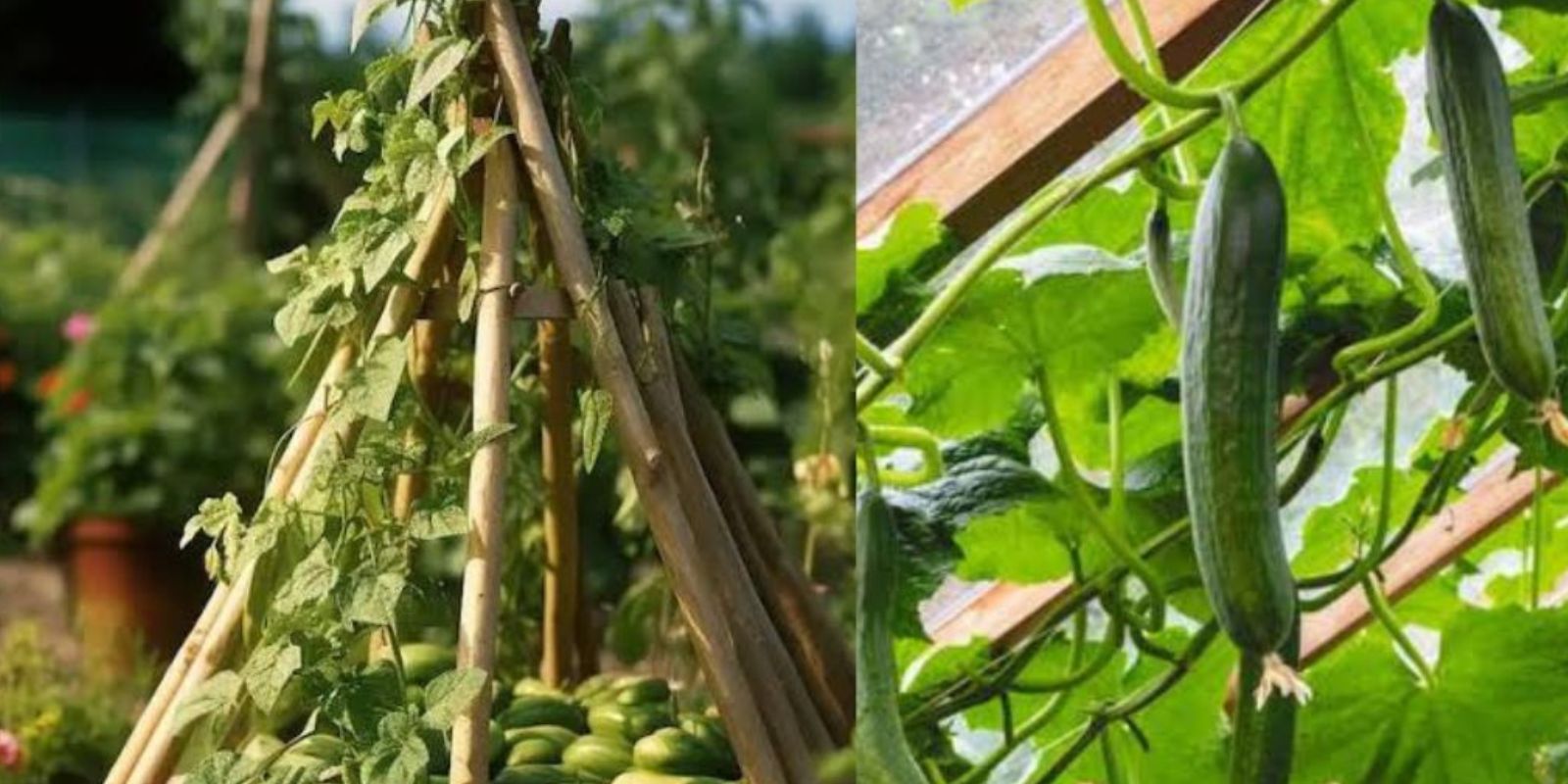Cucumbers are a favorite in home gardens, offering refreshing crunch and rich nutrients. However, many gardeners struggle with overcrowding, poor airflow, and inefficient space use when growing cucumbers. One little-known but highly effective method for improving cucumber cultivation is the herringbone planting pattern.
This technique optimizes space, enhances plant health, and increases cucumber yields by arranging the plants in a V-shape, similar to a herringbone pattern. It’s a brilliant space-saving and productivity-boosting method that every gardener should know about.
In this article, we’ll explore why this method works and provide a step-by-step guide to growing cucumbers in a herringbone pattern for a thriving garden!
Why Use the Herringbone Planting Method for Cucumbers?
Many gardeners grow cucumbers in rows or raised beds, but these traditional methods can lead to problems such as:
- Overcrowding: Vines get tangled, limiting air circulation.
- Poor Sunlight Exposure: Some leaves and fruits don’t get enough sun.
- Increased Disease Risk: Moisture buildup in dense foliage encourages fungal infections.
- Difficult Harvesting: Finding ripe cucumbers among thick vines can be tricky.
The herringbone method solves these issues by strategically arranging cucumber plants in a V-shaped pattern, with vines growing outward from a central trellis. This pattern mimics natural vine growth, promoting better health and ease of care.
Benefits of Growing Cucumbers in a Herringbone Pattern
✅ Maximizes Space Efficiency:
Perfect for small gardens or raised beds.
✅ Increases Air Circulation:
Reduces the risk of mildew and fungal infections.
✅ Improves Sunlight Exposure:
Each plant gets optimal light for faster, healthier growth.
✅ Easier Harvesting:
Vines grow in an organized way, making cucumbers more accessible.
✅ Supports Healthier Plants:
Less crowding reduces competition for nutrients and water.
Now, let’s dive into the step-by-step process of implementing this technique in your garden!
Step-by-Step Guide to Growing Cucumbers in a Herringbone Pattern
1. Select the Right Cucumber Variety
Choose vining cucumber varieties instead of bush types. Some excellent options include:
- Marketmore 76 – Disease-resistant and productive.
- Straight Eight – Classic, smooth-skinned cucumbers.
- Japanese Long – Produces slender, flavorful cucumbers.
- Lemon Cucumber – Unique round cucumbers with mild flavor.
2. Choose the Ideal Location
Cucumbers thrive in full sun, so pick a spot that gets at least 6-8 hours of direct sunlight daily. Ensure the soil is well-draining and rich in organic matter to support healthy growth.
3. Prepare the Soil
- Loosen the soil 10-12 inches deep for strong root development.
- Mix in compost or aged manure for nutrient-rich soil.
- Maintain a pH of 6.0 to 6.8 for best results.
4. Plan the Herringbone Layout
- Create a V-shaped planting pattern with a trellis in the center.
- Place cucumber hills 12-18 inches apart on either side of the trellis.
- Space each row 3-4 feet apart to allow proper vine growth.
5. Plant the Seeds
- Sow 2-3 seeds per hill about ½ inch deep in the soil.
- Cover lightly with soil and water gently.
- Once seedlings appear, thin them to 1-2 strong plants per hill.
6. Set Up the Trellis
- Install a sturdy vertical trellis (such as a cattle panel, wire mesh, or wooden frame).
- The trellis should be at least 5-6 feet tall to support climbing vines.
- Train young vines to climb the trellis as they grow.
7. Water Consistently
Cucumbers require consistent moisture, especially in hot weather.
- Water deeply 2-3 times per week, ensuring soil remains moist but not soggy.
- Use mulch (straw, grass clippings, or wood chips) to retain soil moisture.
8. Apply Organic Fertilizer
- Use a balanced fertilizer (10-10-10) every 3-4 weeks.
- Organic options like compost tea, fish emulsion, or aged manure work well.
9. Prune for Better Growth
- Trim excess lateral shoots to direct energy toward fruit production.
- Remove damaged or diseased leaves to keep the plant healthy.
10. Harvest at the Right Time
- Pick cucumbers when they reach 4-6 inches for best flavor and texture.
- Harvest every 2-3 days to encourage continued production.
Common Mistakes to Avoid
🚫 Skipping the Trellis: Without vertical support, vines sprawl, increasing disease risk.
🚫 Overcrowding Plants: Planting too close prevents air circulation and sunlight exposure.
🚫 Inconsistent Watering: Uneven moisture leads to bitter cucumbers or stunted growth.
🚫 Ignoring Pests: Watch for aphids, cucumber beetles, and powdery mildew. Use companion planting (like marigolds and nasturtiums) to deter pests naturally.
Final Thoughts
Growing cucumbers using the herringbone pattern is a simple yet highly effective gardening technique that boosts yields, prevents diseases, and makes harvesting easier.
By following these step-by-step instructions, you can enjoy a productive cucumber harvest while optimizing your garden space.
🌱 Would you try this method in your garden? Share your thoughts in the comments! ⬇️👇

